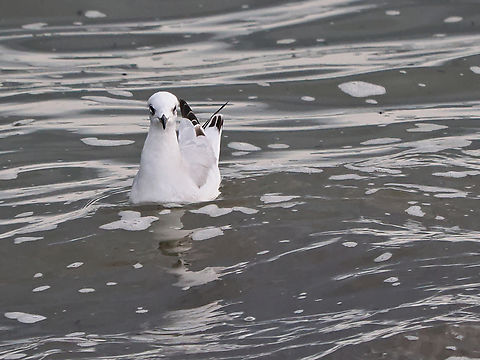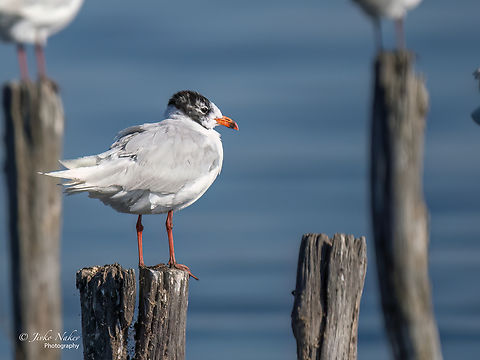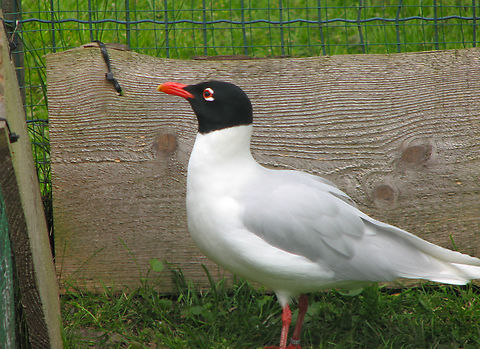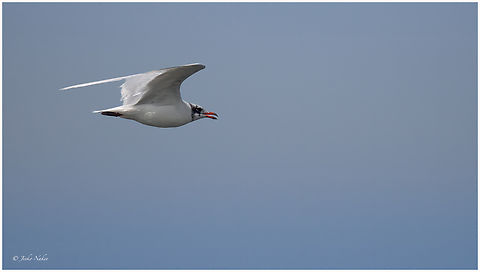
Appearance
The Mediterranean gull is slightly larger and bulkier than the black-headed gull with a heavier bill and longer, darker legs. The breeding plumage adult is a distinctive white gull, with a very pale grey mantle and wings with white primary feathers without black tips. The black hood extends down the nape and shows distinct white eye crescents. The blunt tipped, parallel sided, dark red bill has a black subterminal band. The non breeding adult is similar but the hood is reduced to an extensive dusky "bandit" mask through the eye. This bird takes two years to reach maturity. First year birds have a black terminal tail band and more black areas in the upperwings, but have pale underwings.
Naming
The scientific name is from Ancient Greek. The genus Ichthyaetus is from ikhthus, "fish", and aetos, "eagle", and the specific melanocephalus is from melas, "black", and -kephalos "-headed".As is the case with many gulls, it has traditionally been placed in the genus Larus.

Distribution
This gull breeds almost entirely in the Western Palearctic, mainly in the south east, especially around the Black Sea, and in central Turkey. There are colonies elsewhere in southern Europe, and this species has undergone a dramatic range expansion in recent decades. As is the case with many gulls, it has traditionally been placed in the genus "Larus".
Status
The Mediterranean gull is one of the species to which the "Agreement on the Conservation of African-Eurasian Migratory Waterbirds" applies.Habitat
This gull breeds in colonies in large reed beds or marshes, or on islands in lakes; where its population is small, it nests in black-headed gull colonies. Like most gulls, it is highly gregarious in winter, both when feeding or in evening roosts. It is not a pelagic species, and is rarely seen at sea far from coasts.The Mediterranean gull's feeding habits are much an opportunistic omnivore, eating fish, worms, scraps, insects, offal and carrion.
This is a noisy species, especially at colonies, with a nasal "yeah" call.
References:
Some text fragments are auto parsed from Wikipedia.